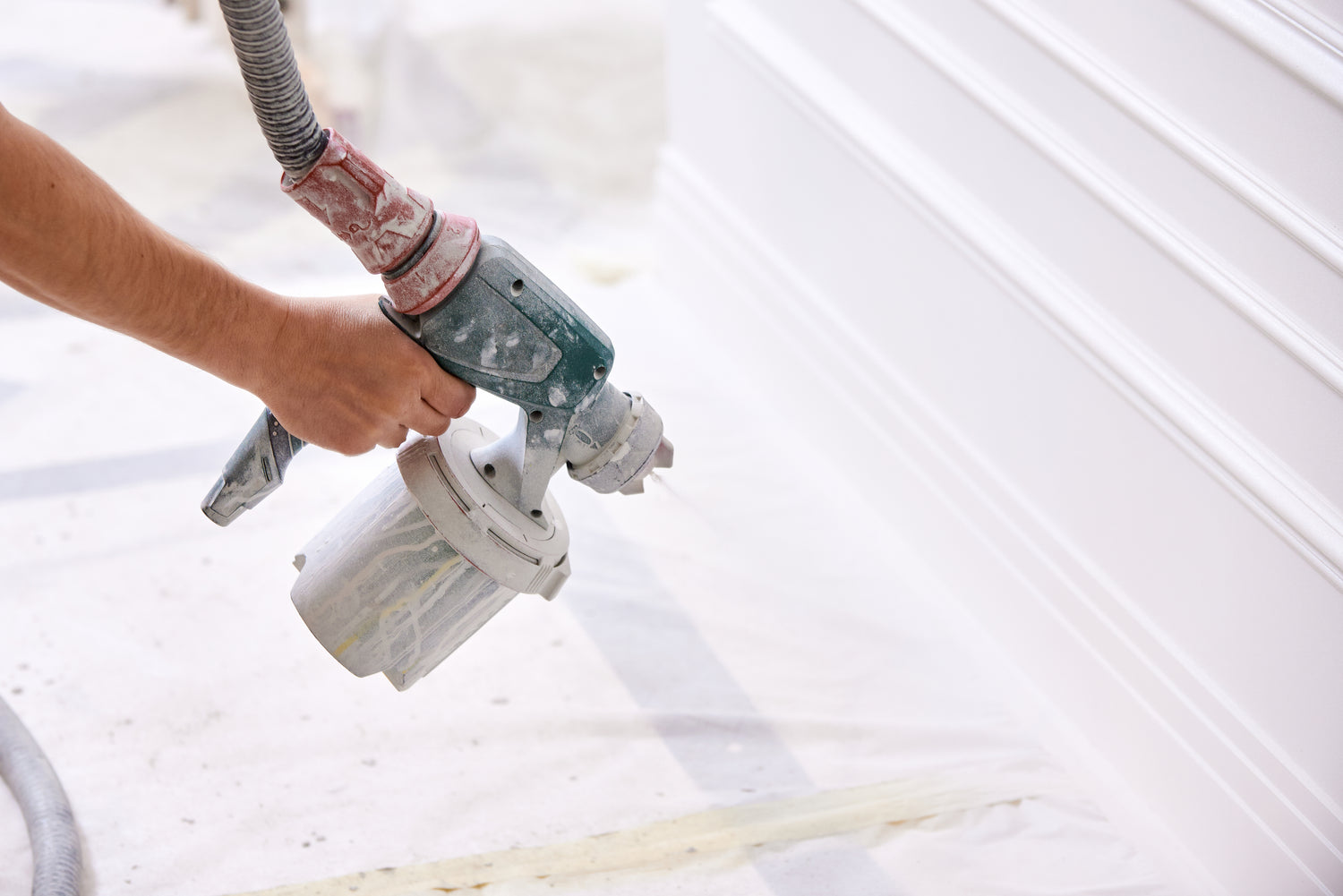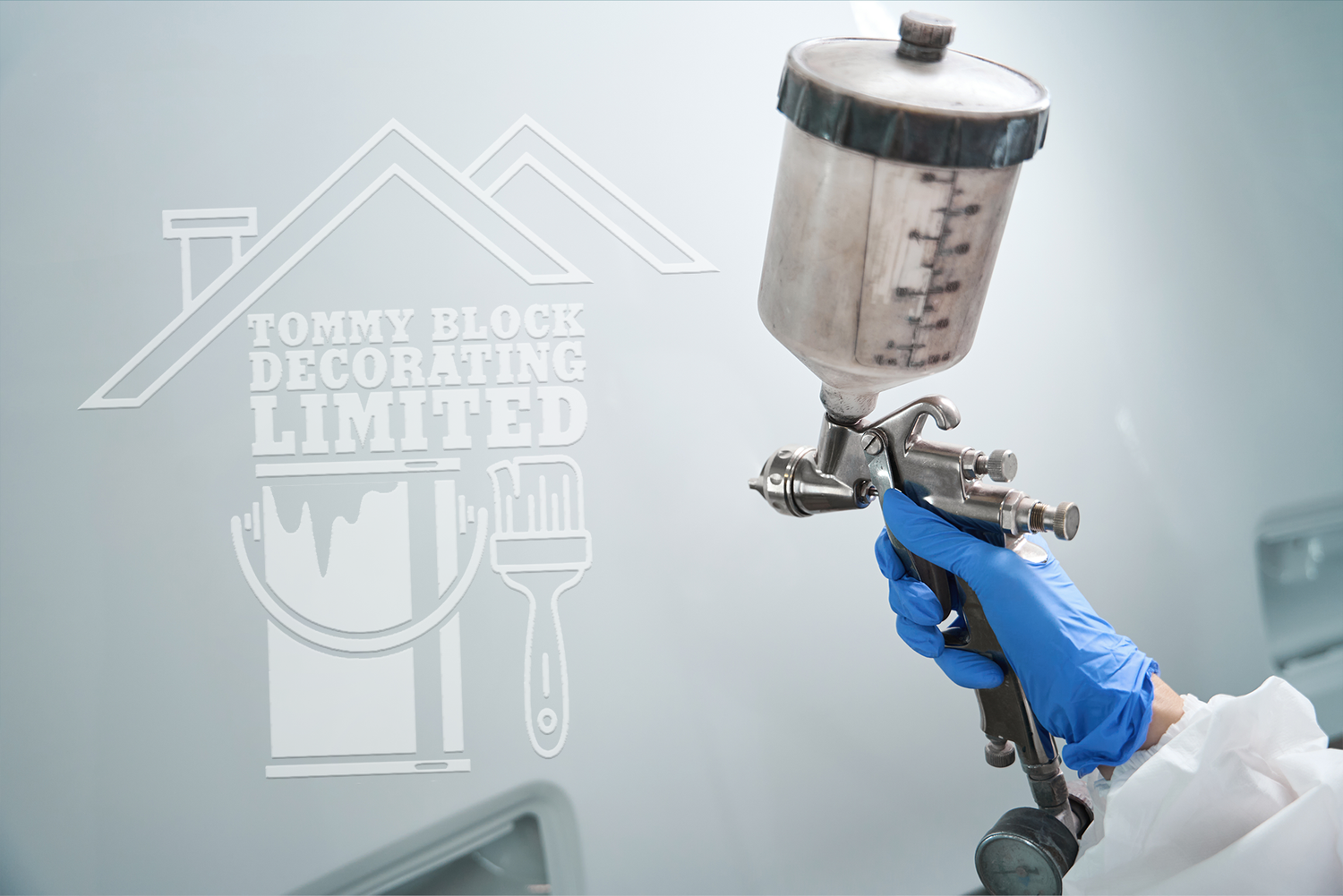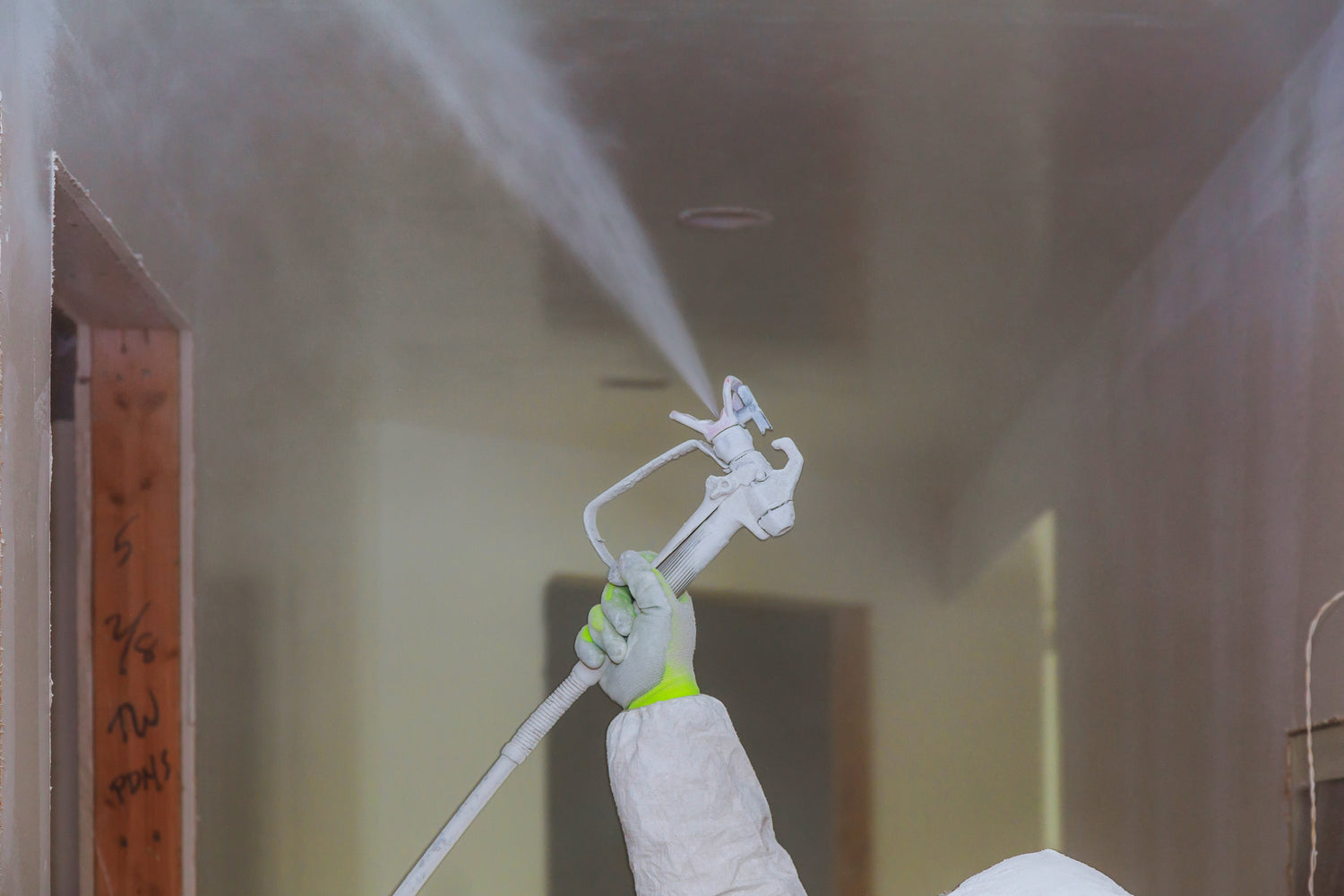
Paint Spraying
is a painting method that uses a device called a paint sprayer to apply paint, primer, or other finishes to a surface. Instead of using brushes or rollers, the sprayer atomizes the paint into fine particles and sprays it onto the surface, creating a smooth, even finish. This technique is commonly used for both residential and commercial projects due to its efficiency and professional results.

Types of Paint Sprayers:
- Airless Paint Sprayers:
- High-Volume Low-Pressure (HVLP) Sprayers:
- Compressed Air Sprayers:
- Electrostatic Sprayers:
Key Steps in Paint Spraying:
- Surface Preparation:
- Equipment Setup:
- Application:
- Cleanup:

Benefits of Paint Spraying
- Speed and Efficiency:
- Smooth Finish:
- Versatility:
- Cost-Effective for Large Projects:
Applications of Paint Spraying:
- Residential: Walls, ceilings, decks, fences, furniture refinishing.
- Commercial: Offices, industrial equipment, exterior walls.
- Artistic: Murals and other creative applications.
Considerations for Paint Spraying:
- Overspray: Ensure proper masking to protect nearby areas.
- Ventilation: Use in well-ventilated areas to avoid inhaling fumes.
- Learning Curve: Requires some practice to achieve professional results.
- Equipment Cost: Initial investment can be higher than brushes or rollers.
Paint spraying is a versatile and effective method for achieving high-quality finishes on various surfaces. It’s a go-to choice for professionals and DIY enthusiasts looking for speed and a polished result.
